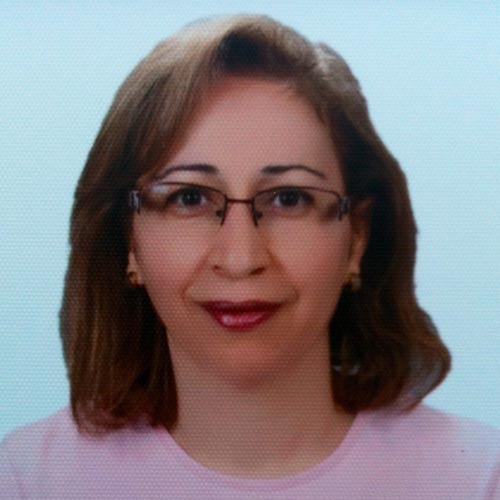Abstract
Chronic obstructive pulmonary disease (COPD) is associated with numerous comorbidities, including muscle involvement which consists of changes in the structure and function of peripheral and respiratory muscles. Ultrasound can provide a non-invasive assessment of muscle damage. Ultrasound assessment of the quadriceps contractility index (Qci) is feasible, rapid, simple and reliable. Numerous studies have demonstrated that Qci is linked to the severity of COPD, clinical symptoms and respiratory muscle activity. Furthermore, ultrasound makes it possible to observe the dynamics of the diaphragm by measuring its amplitude, its contraction speed and the duration of each contraction phase. Ultrasound examination of muscle damage in COPD could constitute a promising new tool to assess the severity of the disease.
Introduction
GOLD 2023 defines broncho-pneumopathy obstructive chronic disease (COPD) as a“ Heterogeneous lung disease characterized by chronic respiratory symptoms (dyspnea, cough, expectoration and/or exacerbations) due to of the airways (bronchitis, bronchiolitis) and/or alveoli (emphysema) that cause persistent obstruction, often progressive, of the airflow” (1).
COPD is a major public health problem with the consequences it brings in terms of morbidity, mortality and disability. Globally, it is estimated that 480 million People had COPD in 2019 (2) and this figure is underestimated (3). According to the BOLD study, 10.1% of people over 40 would have COPD (4).
The increase in tobacco consumption in developing countries as well as the Population ageing in the countries industrial companies will lead to an increase in the prevalence of of COPD in the next 30 years. In 2030, 4.5 million deaths from COPD are expected annually (5).
According to the Global Burden of Diseases, established by the World Health Organization, COPD is the third most deadly disease in the world. She was responsible for 3.23 million deaths in 2019 (5.7% of deaths) (3).
The cost of COPD is estimated in terms of health care and productivity loss a 48.4 billion euros per year for the EU countries
In France, direct cost is estimated at annual cost of the disease to 3.5 billion euro (6).
In Algeria, according to the results of the Breathe study, prevalence of COPD is estimated at 4% in the general population and 25% of smokers (7). Smoking increases this prevalence which 31.5% among smokers, 14.6% among Ex-smokers and 2.5% for non-smokers (8).
COPD is associated with many comorbidities, including lung cancer, cardiovascular disease, osteoporosis, the cachexia and muscle involvement (9).
Muscular atrophy of skeletal muscles is an important general event of COPD.
This dysfunction has multiple causes, including physical inactivity (10) and systemic inflammation (11). Corticosteroid therapy systemic, hypoxemia, hypercapnia, hypersensitivity malnutrition, electrolyte disorders, Heart failure and hypogonadism are also involved (12).
Given the severity of the disease and population, it is estimated that 4 to 35% patients with COPD have a loss of muscle mass (13, 14).
A recent study found that 32% of patients with COPD had a strength of quadriceps below lower limits of Normal and approximately 25% of patients in the GOLD I and II and 38% of patients at stage GOLD IV were affected by muscle weakness (15).
This muscle weakness has several serious consequences, including intolerance to The decline in quality of the financial year (16, 17) life, and increased mortality (18). In patients with a significant decrease of the air flow, the section decrease transverse to the middle of the thigh is associated with a 13 times higher relative mortality risk the one observed in patients whose mass muscular is good (19).
The ultrasound evaluation of the quadriceps contractility (Qci) is feasible, fast, simple and reliable. The ICQ is related to severity of COPD, clinical symptoms and activity of the respiratory muscles. His measurement could a promising new tool for Assess the severity of the disease (20).
The diaphragm is the main muscle of inspiration during resting breathing (21).
It is a striated skeletal respiratory muscle, having a rhythmic activity, permanent, Involuntary, but adjustable by cortical activity. It is a resilient muscle, characterized by high oxidation capacity, a high proportion (60%) of fatigue resistant fibers and a lot of capillaries (22).
Dysfunction of the diaphragmatic muscles plays a significant role in the pathogenesis of respiratory distress in patients with COPD (23).
Traditionally, the weakness of the diaphragm to its shortening caused by hyperinflation, which places the diaphragm in a mechanical disadvantage (24).
However, several more recent studies show that Participation in other phenomena, such as Intrinsic alterations of the diaphragm (25, 26).
In patients with COPD, it has been found that a transition to a higher proportion of Type I fibers compared to subjects healthy (27). Type I fibers produce a force is lower than that of Type II fibers, which improves fatigue resistance (25).
Exogenous oxidative stress caused by exposure Cigarette smoke, biomass and air pollution, oxidative stress endogenous resulting from cell activation inflammatory in the lung and reduction antioxidants leads to an increase in oxidative stress in the lungs. This is a significant factor in pathophysiology of COPD and its evolution, as well as in increased risk of exacerbations acute. Increased oxidative stress in the lungs of patients with COPD leads to a chronic inflammation, a decrease in anti-inflammatory effects of corticosteroids, a rapid aging of the lungs, fibrosis peripheral respiratory tract and a hyperproduction of mucus (28).
Oxidative stress plays an important role in the pathophysiology of COPD (29, 30). Some studies have shown the association between stress oxidative and the severity of COPD leading to Medical comorbidities and dysfunction muscular(31).
Several tools to evaluate directly or indirectly the diaphragm : Measurement of inspiratory pressure and transdiaphragmatic pressure by stimulation magnetic or electrical phreonic nerve, EMG or imaging. The evaluation does not diaphragm selective or invasive nature and very complex of these tools limit their use (32).
In pneumology, ultrasound is still little used in diaphragm exploration while it offers many advantages: is a non-invasive, quick and easy to Can be used especially at the bedside patients with exacerbations COPD, especially with devices portable and ultra-portable (33, 34). This provides possibility of structural analysis and functional of two hemi-diaphragms distinct (35, 36).
Two components of diaphragm function are commonly assessed by ultrasound (32):
− Subcostal diaphragm excursion anterior and lateral thoracic (EXdi).
− The thickening fraction of the diaphragm measured at the diaphragm apposition area on the thoracic cage (TFdi).
Thus, thanks to ultrasound, it is possible to observe directly the dynamics of the diaphragm in measuring its amplitude, its contraction rate, the duration of each contraction phase. Being non-irradiant, this examination can be repeated as many times as you want to follow the time-lapse diaphragmatic kinetic (37).
Finally, its cost is lower than that of the others methods of diaphragm exploration.


